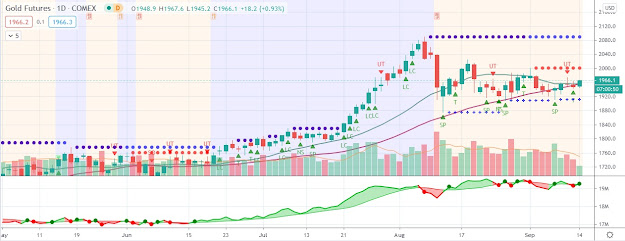Gold price below $1,350 last week has spurred renewed physical buying interest
Gold continues to find cause for support. The Fed minutes of the their FOMC meeting earlier this month indicated the FOMC considered (but decided against it) targeting longer dated yields irrespective of the amount of bond buying necessary. The minutes further indicated the FOMC in general agreed that more liquidity is necessary for the US economy. They moved their growth forecast lower and unemployment forecast higher. Higher unemployment and lower growth implies very accommodative monetary policy in 2011.
 Concerns remain over European sovereign debt, with 5y CDS rising for Spain, Portugal and Ireland yesterday - despite the Irish bail-out plan. These concerns are set to weigh on the euro. Credit concerns are also set to benefit gold. Based on the physical market, gold remains a buy on dips. We believe sovereign credit risk in Europe, combined with the physical market should see gold in euro-terms outperform gold in dollar-terms for the time being. We've seen strong physical selling and scrap gold coming to market during the first two weeks of November as the gold price pushed above $1,400.
Concerns remain over European sovereign debt, with 5y CDS rising for Spain, Portugal and Ireland yesterday - despite the Irish bail-out plan. These concerns are set to weigh on the euro. Credit concerns are also set to benefit gold. Based on the physical market, gold remains a buy on dips. We believe sovereign credit risk in Europe, combined with the physical market should see gold in euro-terms outperform gold in dollar-terms for the time being. We've seen strong physical selling and scrap gold coming to market during the first two weeks of November as the gold price pushed above $1,400.
However, the latest decline in the gold price below $1,350 last week has spurred renewed physical buying interest. Our Standard Bank Gold Physical Flow Index (GPFI) has jumped into positive territory after lingering in negative territory earlier this month (see Commodities Daily dated 23 Nov’10). The return of buying interest in the market is an indication that the physical gold market is slowly adjusting to the higher gold price which now sees a “higher low” in the gold price as a buying opportunity. Long-term this is a bullish sign. We continue to expect gold physical demand to prevail on dips into January. Since Monday gold in euro-terms has surged Eur30 higher. As pointed out on Monday, we believe sovereign credit risk in Europe, combined with the physical market should see gold in euro-terms outperform gold in dollar-terms for the time being.
Gold support is at $1361 and $1,345. Resistance is at $1,388 and $1,397.
 Concerns remain over European sovereign debt, with 5y CDS rising for Spain, Portugal and Ireland yesterday - despite the Irish bail-out plan. These concerns are set to weigh on the euro. Credit concerns are also set to benefit gold. Based on the physical market, gold remains a buy on dips. We believe sovereign credit risk in Europe, combined with the physical market should see gold in euro-terms outperform gold in dollar-terms for the time being. We've seen strong physical selling and scrap gold coming to market during the first two weeks of November as the gold price pushed above $1,400.
Concerns remain over European sovereign debt, with 5y CDS rising for Spain, Portugal and Ireland yesterday - despite the Irish bail-out plan. These concerns are set to weigh on the euro. Credit concerns are also set to benefit gold. Based on the physical market, gold remains a buy on dips. We believe sovereign credit risk in Europe, combined with the physical market should see gold in euro-terms outperform gold in dollar-terms for the time being. We've seen strong physical selling and scrap gold coming to market during the first two weeks of November as the gold price pushed above $1,400.However, the latest decline in the gold price below $1,350 last week has spurred renewed physical buying interest. Our Standard Bank Gold Physical Flow Index (GPFI) has jumped into positive territory after lingering in negative territory earlier this month (see Commodities Daily dated 23 Nov’10). The return of buying interest in the market is an indication that the physical gold market is slowly adjusting to the higher gold price which now sees a “higher low” in the gold price as a buying opportunity. Long-term this is a bullish sign. We continue to expect gold physical demand to prevail on dips into January. Since Monday gold in euro-terms has surged Eur30 higher. As pointed out on Monday, we believe sovereign credit risk in Europe, combined with the physical market should see gold in euro-terms outperform gold in dollar-terms for the time being.
Gold support is at $1361 and $1,345. Resistance is at $1,388 and $1,397.



Comments
Post a Comment